More than 10 years ago, during a night walk at the foothills of Mount Kinabalu (Sabah, Malaysia), my guide Jimmy suddenly shouted, “Hey! There’s a horned frog here!”
“Where?” I asked. I only saw him pointing his flashlight at a leaf—but I didn’t see any frog. Then he picked up the “leaf” and showed me a horned frog in his hand. I was amazed by its perfect camouflage and strange appearance. Since then, I’ve been a fan of horned frogs.
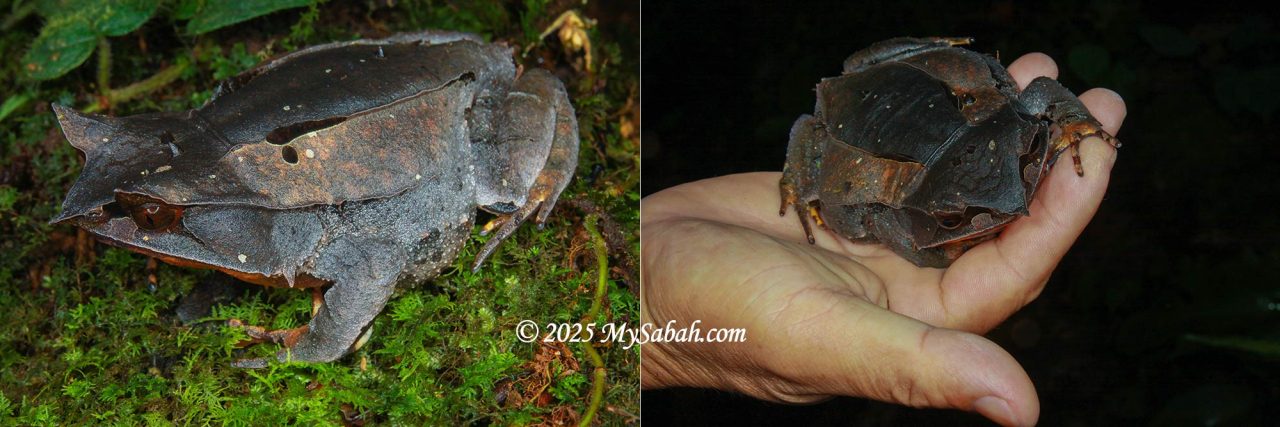
No, horned frogs are not horny. They have large, broad heads, and their “horns” are pointy, triangular projections extending from the edges of their eyelids. The horns and snouts mimic curled, pointed leaf tips. Each species has different “horns.” Their bodies are usually brown or reddish-brown, matching the forest foliage. These features make horned frogs masters of disguise. They stay still and stealthy, waiting to ambush unsuspecting prey that passes by.
1) Bornean Horned Frog
The first horned frog I ever photographed was a Bornean Horned Frog. With the “horns” on its head, it looks so grumpy and sinister that if a princess kissed it, she’d probably turn it into a demon—the prince of darkness—instead of a handsome prince. Just kidding. It’s actually a very docile frog.

The Bornean Horned Frog, also known as the Malayan Horned Frog (Pelobatrachus nasuta), is the most common and widespread horned frog species. You can find it in both lowland and highland forests of Borneo, Peninsular Malaysia, and Sumatra.
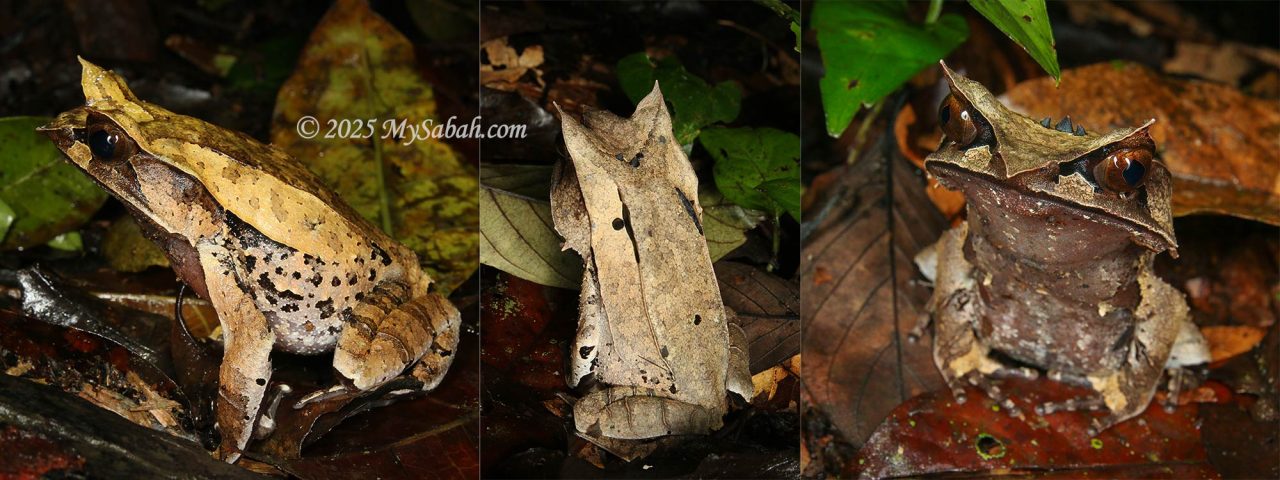
It has the most prominent and protruding horn-like projections from its eyelids and snout. Some individuals have an orange throat, making them very photogenic. This frog comes in shades of light greyish to reddish-brown. If you hear loud honks that sound like a metal instrument near a stream, that’s probably the Bornean Horned Frog.
2) Montane Horned Frog
The Montane Horned Frog, or Kobayashi’s Horned Frog (Pelobatrachus kobayashii), is endemic to Sabah, Malaysia. I consider it the most iconic frog of Sabah. It lives mostly in montane forests between 1,200 and 1,700 metres above sea level, usually hidden in the leaf litter or along rocky stream banks.

If the name “Kobayashi” sounds Japanese—yes, you’re right. The species was named after Dr. Tatsuo Kobayashi, a Japanese biologist who collected the first known specimen during a scientific expedition.

3) Kinabalu Horned Frog
The Kinabalu Horned Frog, also called the Balu Spadefoot Toad (Pelobatrachus baluensis), is another species found exclusively in Sabah, living only in the mountains of western Sabah.
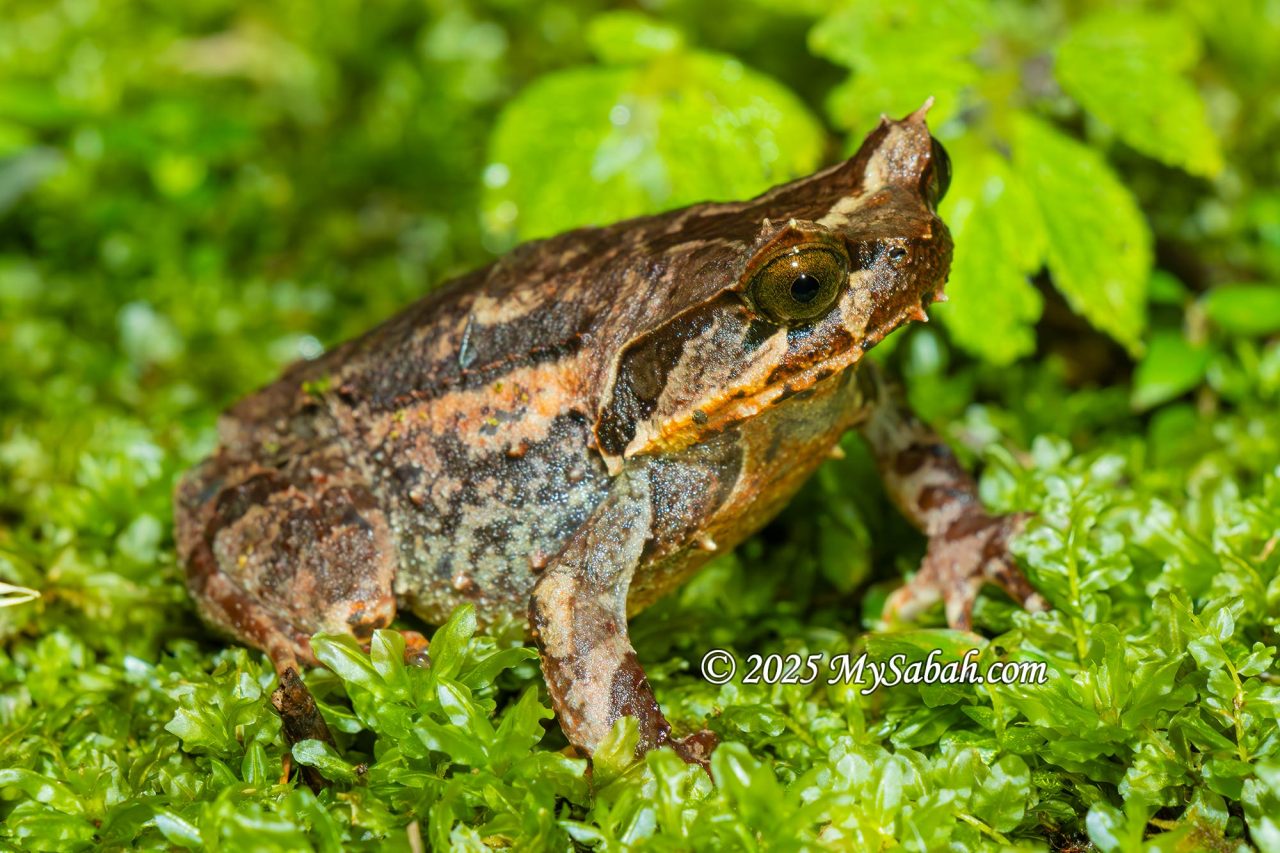
Endemic to the highlands of northern Borneo, the Kinabalu Horned Frog breeds only in cool, clear, rocky streams. During the day, it lies camouflaged among the forest floor’s leaf litter, emerging at night to call for mates.
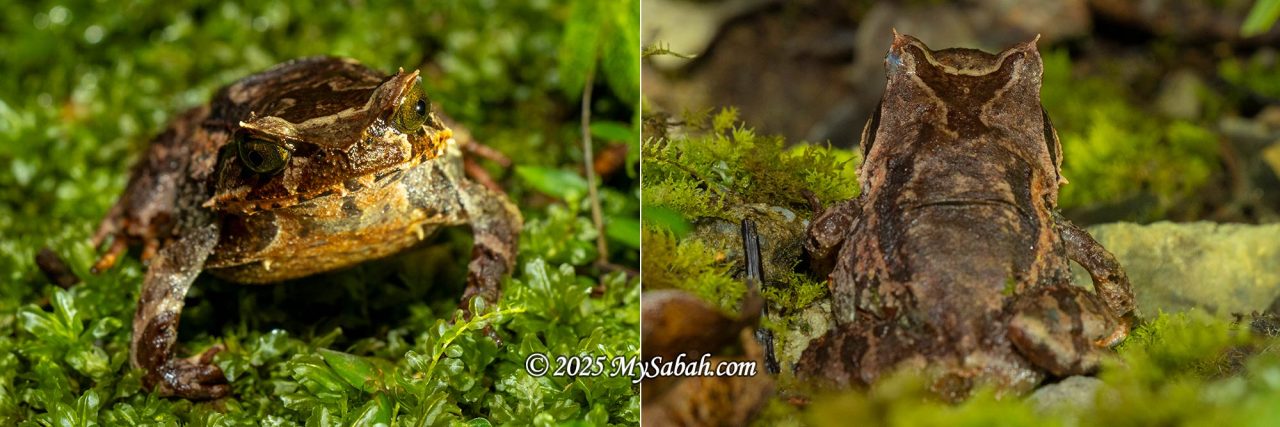
4) Rough-backed Horned Frog
The Rough-backed Horned Frog (Pelobatrachus edwardinae) is also known as the Rough Horned Frog, Edwardina’s Horned Frog, or Edwardina’s Spadefoot Toad. It lives in steep or hilly lowland rainforests and is endemic to Borneo.
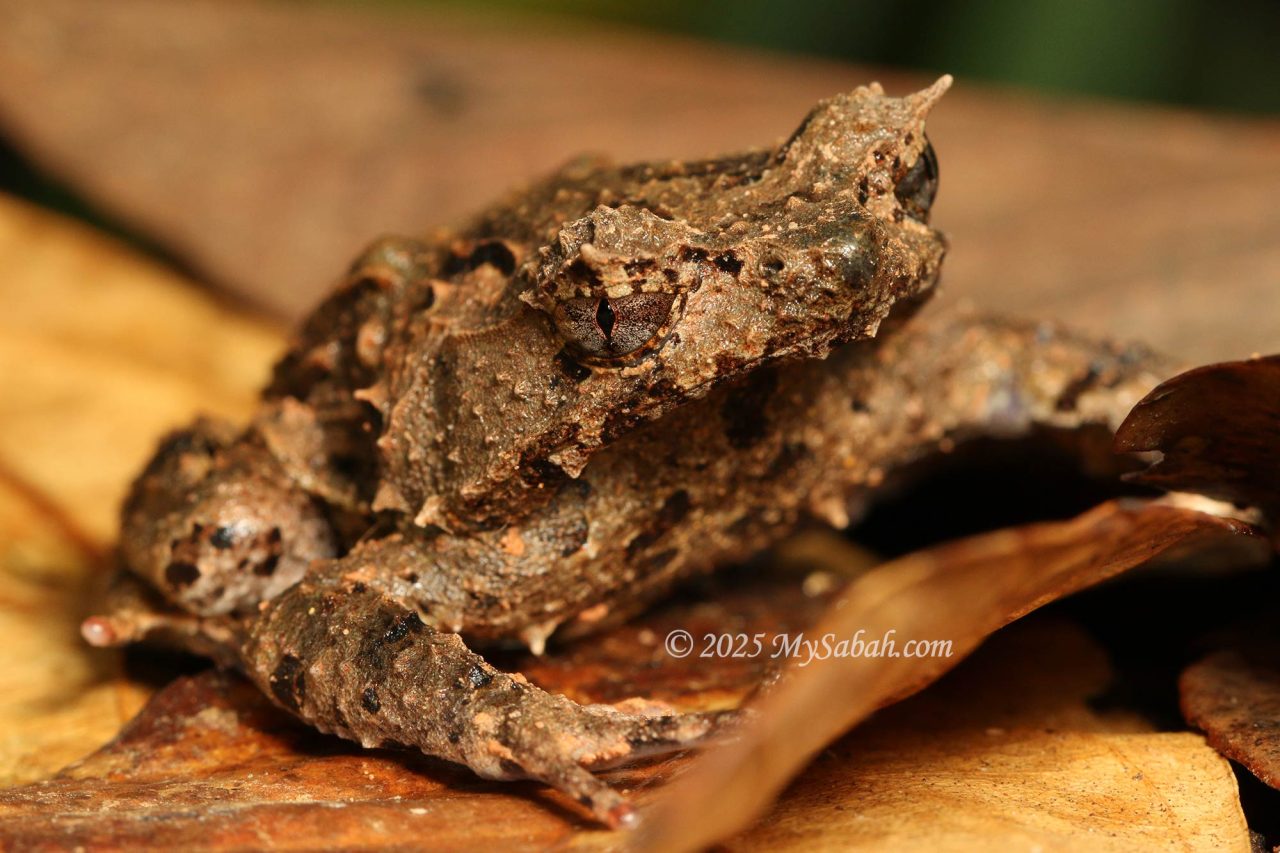
This elusive frog is rarely seen due to its excellent camouflage and earthy colours. Chien Lee, a well-known wildlife photographer, spent nearly two weeks doing repeated night hikes in the forest without success. He finally found one by following a peculiar squeaking call—coming from the leaf litter just behind his camp kitchen!
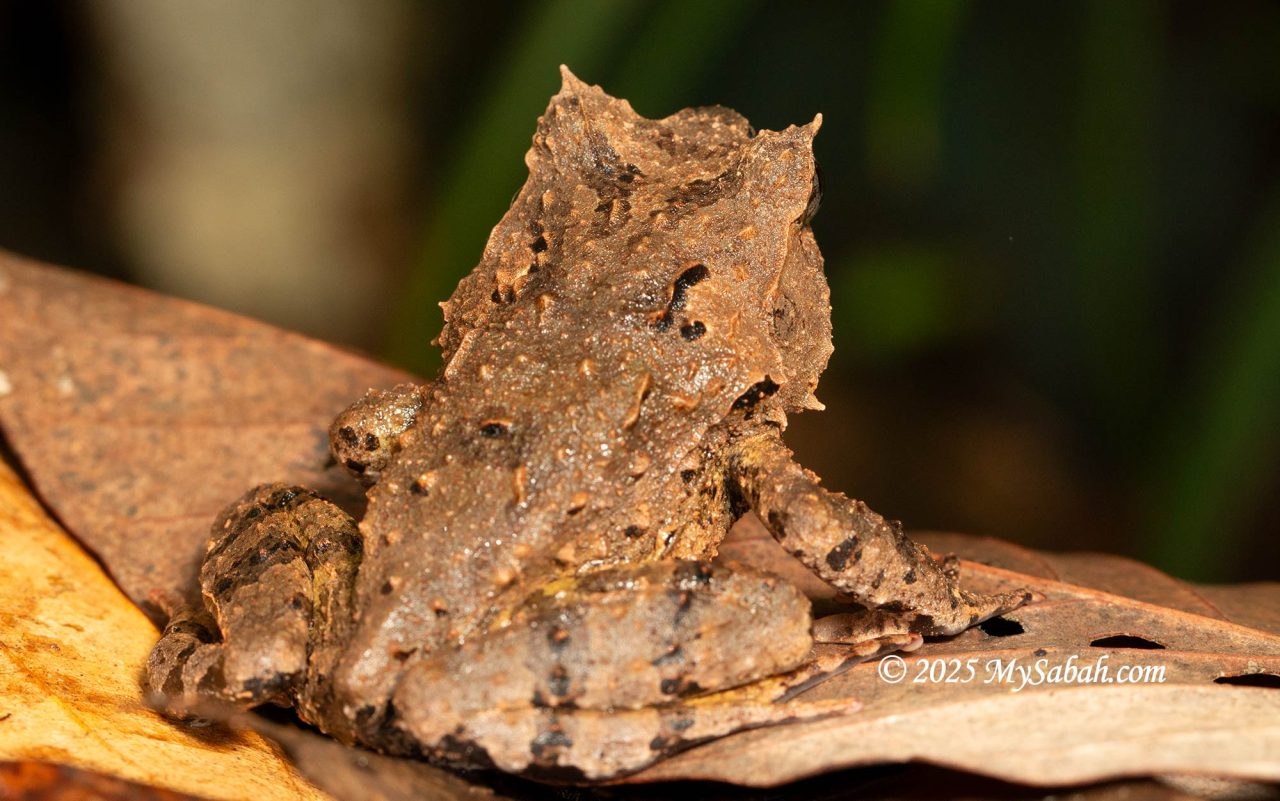
As for me? One just hopped right up to me at the toilet of Borneo Jungle Girl Camp in Nuluhon Trusmadi after a heavy rain. Lucky, huh?
Where to See Horned Frogs?
Horned frogs live on the forest floor, from 60 to 1,900 metres above sea level. They usually hide in burrows, under leaf litter, beneath dead logs, or behind large rocks during the day. They prefer moist environments and are often found near streams, rivers, and wetlands with dense vegetation and high humidity.
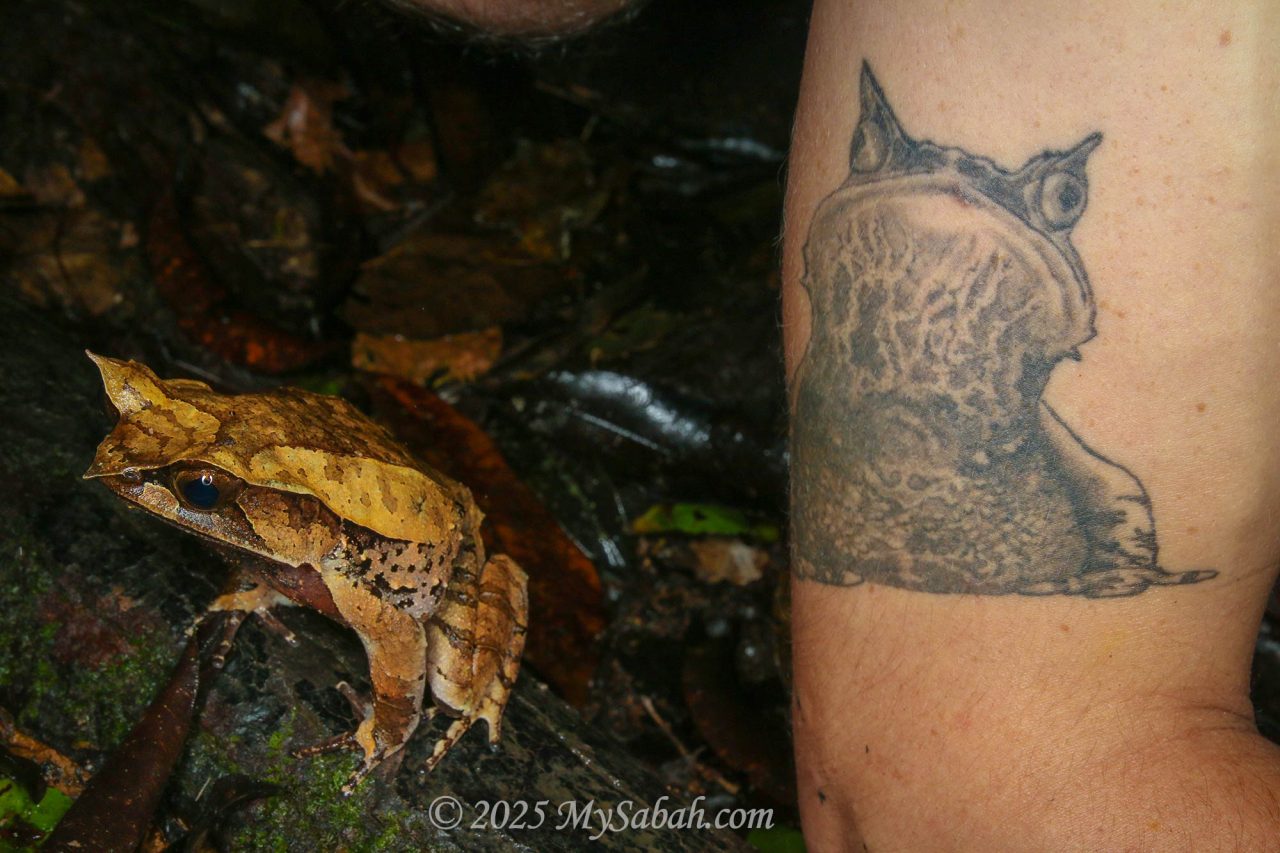
The hardest part is spotting them—they’re almost invisible due to their camouflage. For better chances, hire a guide for a night walk or herping trip in Kinabalu Park or Poring. Experienced guides can even locate them by their loud, harsh calls.
The good news? They can’t hop far or fast due to their short legs and heavy bodies. They usually stay still and try to blend in, making them great subjects for photography.
Photos taken in Sabah, Malaysia Borneo
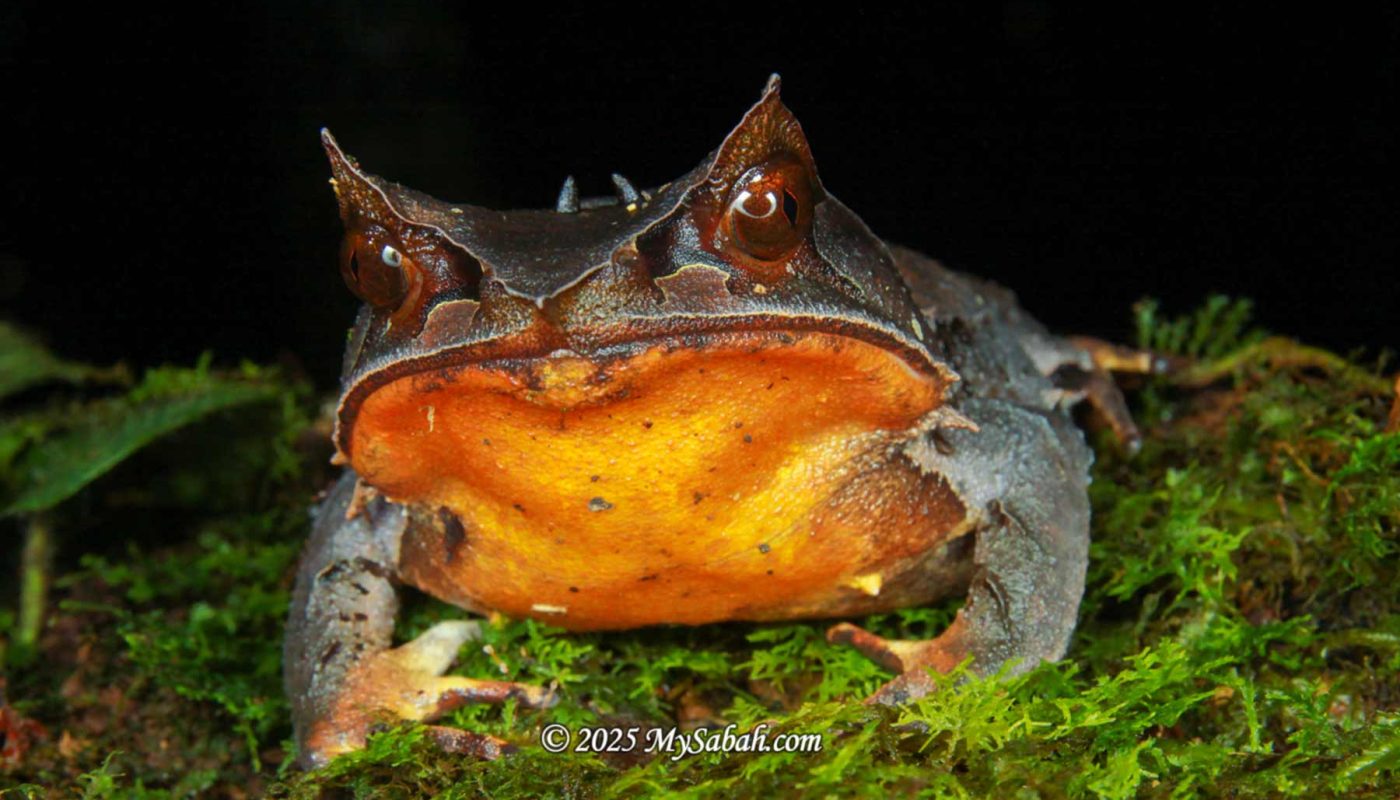

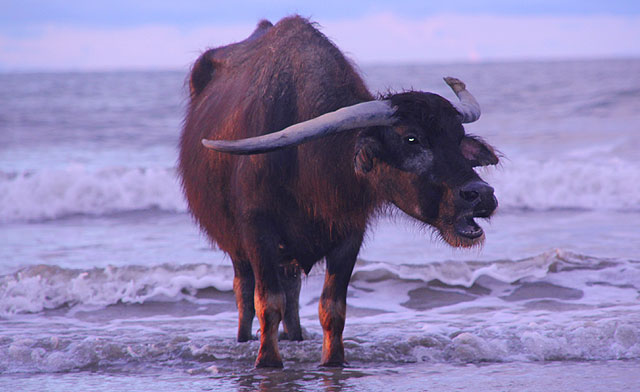
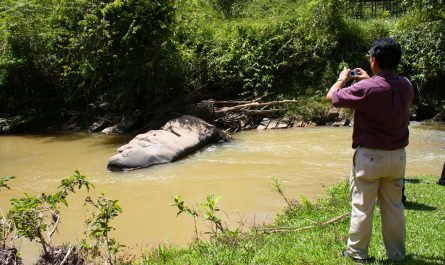
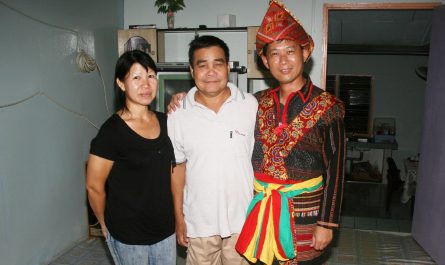
Another place to see them is at Danum Valley Field Cetre, saw one there in 2016
I saw a lot of tree frogs at Danum. So far haven’t spotted a horned frog. 🙂
Beautiful! The nature never fails to impress us.
Their bodies typically mirror the woodland foliage in color, being either brown or reddish-brown. The horned frog is a master at disguise thanks to these characteristics.
The Kinabalu Horned Frog is native to the northern Borneo highlands and breeds exclusively in rocky, chilly streams.